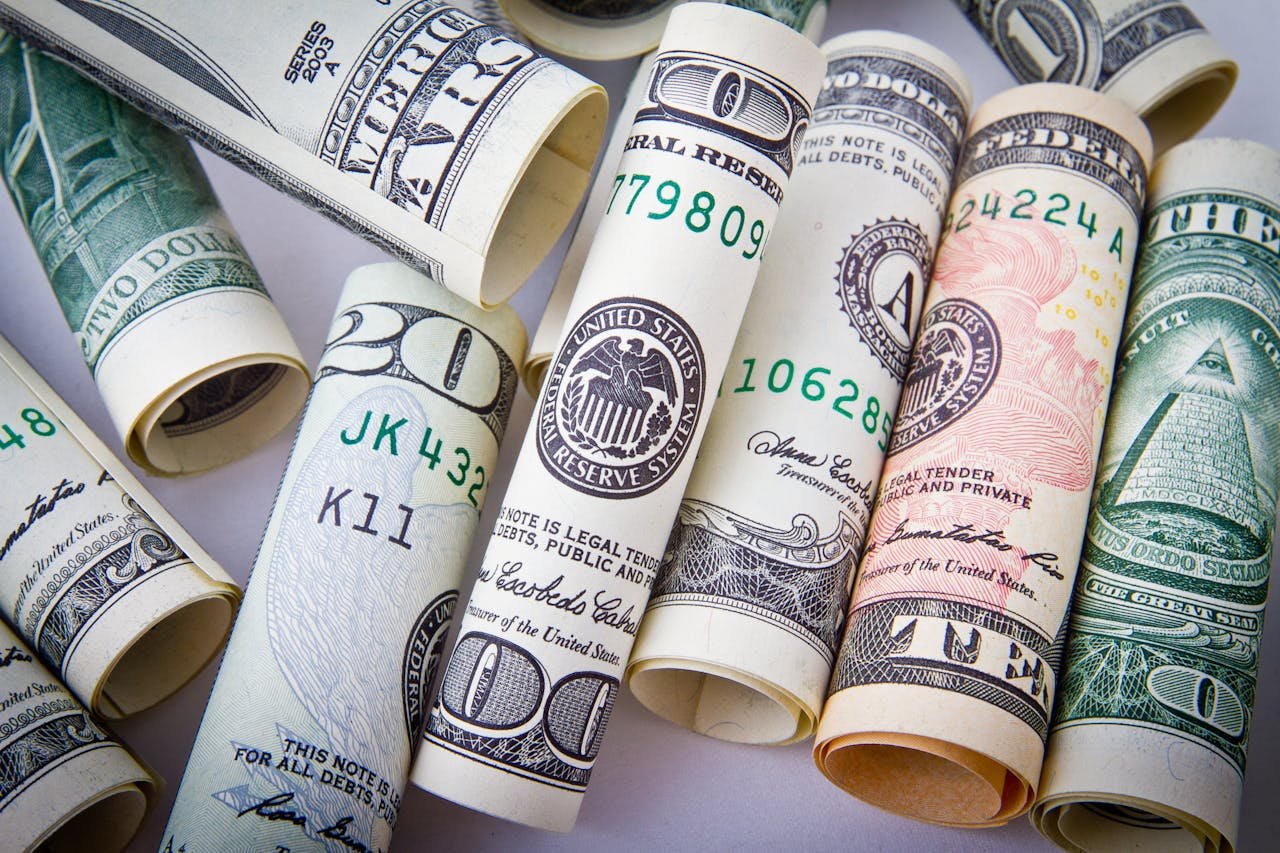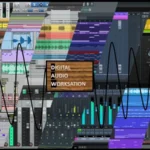In the world of music, earning royalties is a vital aspect for artists and producers to sustain their careers and reap the rewards of their creative endeavors. As you navigate the intricate landscape of music royalties, understanding the nuances becomes crucial for maximizing your earnings and protecting your rights.

Understanding Music Copyrights
In the realm of music, understanding copyrights is pivotal for safeguarding your creative works and ensuring fair compensation. There are two primary types of music copyrights:
- Composition Copyright: This protects the underlying musical work, including the melody, lyrics, and arrangement.
- Sound Recording Copyright: This covers the specific recorded performance or master recording of a musical work.
It’s essential to note that copyright protection exists from the moment a musical work or sound recording is “fixed” in a tangible medium, such as an audio file or sheet music. This protection lasts for the lifetime of the last surviving author plus 70 years for works created after January 1, 1978.
As a copyright holder, you possess exclusive rights over your works, including the right to:
- Make and sell copies
- Distribute the work
- Create derivative works
- Publicly perform or display the work (with some limitations for sound recordings)
Music royalties stem from these exclusive rights granted by copyright law.
4 Types of Music Royalties
The Primary Categories
There are four main types of music royalties that artists, songwriters, and rights holders should be aware of:
Mechanical Royalties
These are payments made to songwriters and publishers when their compositions are reproduced or distributed in physical or digital formats, such as CDs, digital downloads, or streaming services.
Public Performance Royalties
Songwriters and publishers receive these royalties when their music is publicly performed or broadcast, such as on radio, TV, or in public venues. These music royalties are collected and distributed by Performing Rights Organizations (PROs).
Synchronization (Sync) Royalties
These music royalties are generated when a copyrighted musical composition is used in visual media formats like movies, TV shows, video games, or advertisements. They are negotiated and paid to the rights holders by the licensee.
Master Recording Royalties
These music royalties are paid to recording artists, record labels, and producers when their sound recordings are streamed, downloaded, or sold physically. They are earned from the exploitation of the master recording itself.
Additional Royalty Types
Beyond the primary categories, there are several other types of music royalties that artists and rights holders may be entitled to, including:
- Streaming Royalties: Paid to the master rights holder when their song is streamed on platforms like Spotify or Apple Music.
- Digital Performance Royalties: Charges paid to artists and rights owners by non-interactive digital radio services like Pandora or SiriusXM in the US, collected by SoundExchange.
- Neighboring Rights Royalties: Royalties generated from public performance or broadcasting of sound recordings, paid to master recording owners (mainly labels and artists) by organizations like SoundExchange in the US or PPL internationally.
- Print Music Royalties: Paid for the sale or distribution of printed sheet music and scores.
Understanding the various types of music royalties</primary keyword> is crucial for artists, songwriters, and rights holders to ensure they are fairly compensated for their creative works across different mediums and platforms.
Music Royalty Collection Process
Music royalties are typically collected and distributed monthly, with the process involving creating music, distributing the music, the music being played/used, and royalties being collected and distributed to rights holders. The key parties who receive royalties are recording artists, record labels, distributors, songwriters, publishers, and performance rights organizations (PROs).
Royalty Collection Parties and Processes
- Recording Artists: Own the master rights and receive royalties from digital/physical sales, neighboring rights, and sync licensing.
- Songwriters: Own the publishing rights and receive mechanical, performance, and sync royalties. The Composition Copyright is often owned by publishers, who share royalties 50/50 with the songwriters.
- Record Labels: The Sound Recording Copyright is owned and exploited by record labels, who pay music royalties to artists per their contract. Record labels and music publishers may also receive a share of royalties if the artist/songwriter has signed deals with them.
- Independent Artists: Receive 100% of their music royalties without any label deductions.
- Performing Rights Organizations (PROs): A PRO is an organization that collects royalties for songwriters, publishers, and master rights holders when their songs are publicly performed. The main PROs in the US are ASCAP, BMI, and SESAC. Artists should register with a PRO to collect public performance royalties.
- Registration and Distribution: To earn mechanical and performance royalties, you need to register your songs with the appropriate organizations (e.g. Harry Fox Agency, Mechanical Licensing Collective, PROs). Distribute your music through a digital distributor like DistroKid, TuneCore, or CD Baby to get your music on streaming platforms and collect distribution music royalties.
| Registration | Purpose |
| Mechanical Rights Organization (MRO) | Collect mechanical reproduction and distribution royalties |
| SoundExchange | Collect digital performance royalties for featured artists and copyright holders |
| Neighboring Rights Organization (NRO) | Collect royalties for public performances outside the US |
| Sync Licensing Agency | Collect royalties for use of your music in TV, film, commercials, and other media |
| Print Licensing Agency | Collect royalties for reproduction of sheet music and printed materials |
Maintaining accurate records of your music catalog, registration information, and royalty payments is crucial. Additionally, staying up-to-date on changes in royalty collection methods can help maximize your earnings.
Registration for Music Royalty Collection
Setting up a Performing Rights Organization (PRO) account is a crucial step for musicians to protect their rights and collect royalties. These accounts allow artists to tap into the premium benefits and services offered by PROs, ensuring they receive fair compensation for their creative works.
Choosing the Right PRO
The top PROs in America and Canada are ASCAP, BMI, SESAC, and SOCAN (Canada’s sole PRO). When choosing a PRO, musicians should consider factors such as:
- Membership options and associated costs
- Services and benefits offered
- Industry reputation and track record
Thorough research and understanding the nuances of each PRO can help musicians make an informed decision that aligns with their specific needs and goals.
Timely Registration
It’s recommended to register your music with a PRO as soon as you start releasing songs, even if you’re just starting out. This proactive approach ensures that you don’t miss out on any royalties due for your compositions, as PROs collect and distribute royalties for public performances, broadcasts, and other uses of your music.
By setting up a PRO account, musicians can focus on their craft while the administrative aspects of royalty collection are handled by professionals. Additionally, PROs often provide valuable resources, educational opportunities, and networking events to support their members’ growth and success in the industry.
Conclusion
In the ever-evolving landscape of music, understanding and effectively navigating the world of royalties is paramount for artists, songwriters, and rights holders alike. Mastering the complexities of music copyrights, the various types of royalties, and the intricate collection processes is key to ensuring fair compensation and maximizing earnings across diverse platforms and mediums. By arming themselves with this knowledge, creative professionals can confidently protect their rights and reap the rewards of their artistic endeavors.
Ultimately, the path to success in the music industry demands a proactive approach, meticulous record-keeping, and a willingness to stay abreast of the latest developments in royalty collection methods. By embracing these best practices and leveraging the resources provided by organizations like PROs, artists can forge a sustainable and lucrative career, allowing their creative expressions to resonate with audiences while securing the financial rewards they rightfully deserve.
FAQs
1. What are the main types of music royalties? Music royalties can be categorized into four primary types: mechanical, public performance, print music, and synchronization (sync) royalties. These categories represent different ways that music rights can be monetized.
2. What happens to unclaimed music royalties? Unclaimed music royalties, particularly for songwriters outside their home country, are held for a period (typically 6 to 18 months, depending on the region) before potentially being transferred to a “black box.” These black box royalties are usually distributed among local publishers based on their market share.
3. How are royalties divided among songwriters? Songwriters earn royalties that are divided into two main parts: the Songwriting Share and the Publisher Share, each typically receiving 50% of the total performance royalties. This division applies regardless of whether the songwriter was involved in the recording process.
4. Which song has generated the highest amount of royalties? Some of the highest-earning songs in terms of royalties include “Santa Claus is Comin’ To Town” by Haven Gillespie, “Stand By Me” by Ben E King, “Unchained Melody” by The Righteous Brothers, “Yesterday” by The Beatles, “You’ve Lost That Loving Feeling” by The Righteous Brothers, “White Christmas” by Bing Crosby, and “Happy Birthday” by The Hill Sisters.
This post may contain affiliate links. If you make a purchase through these links, we may earn a small commission at no additional cost to you.








